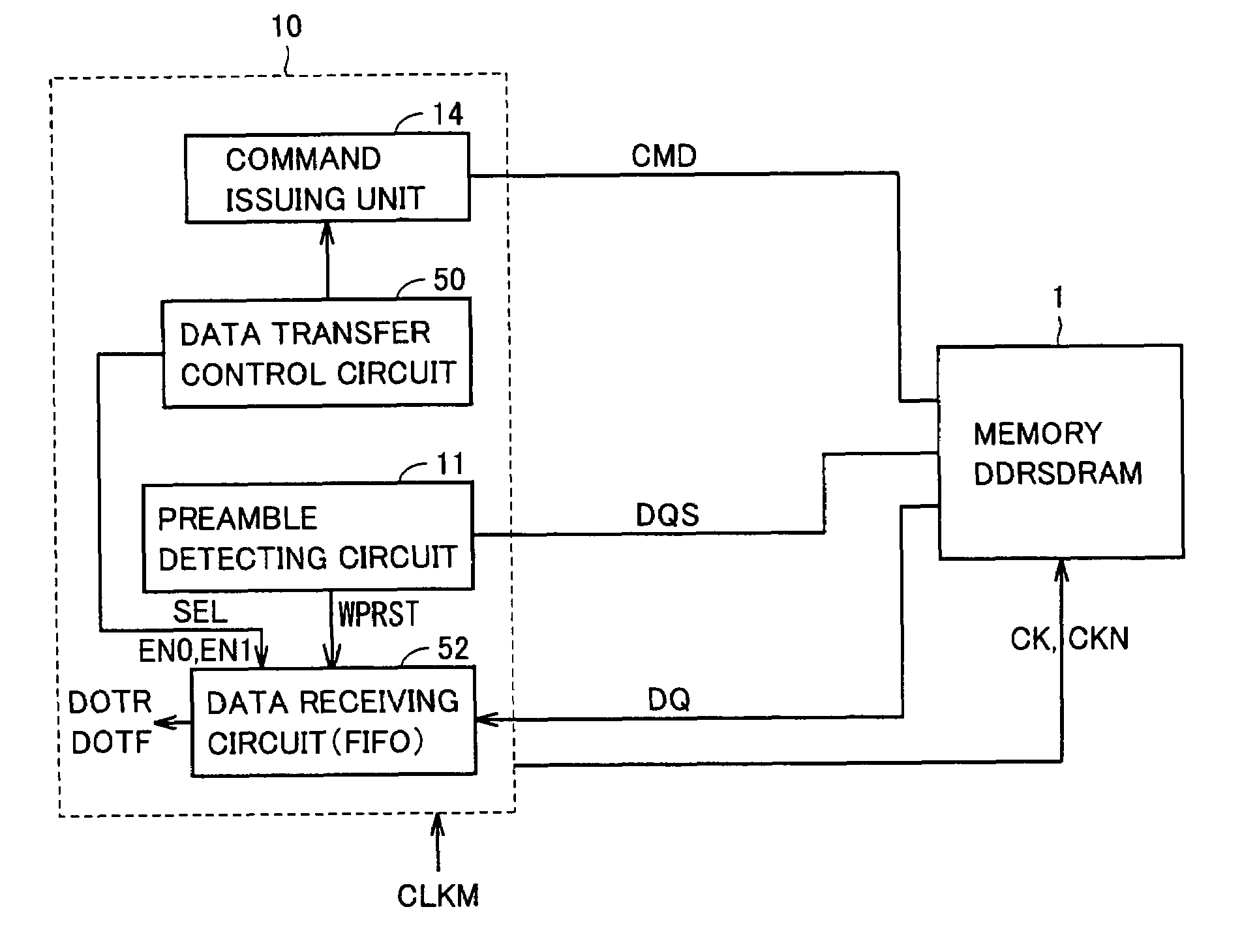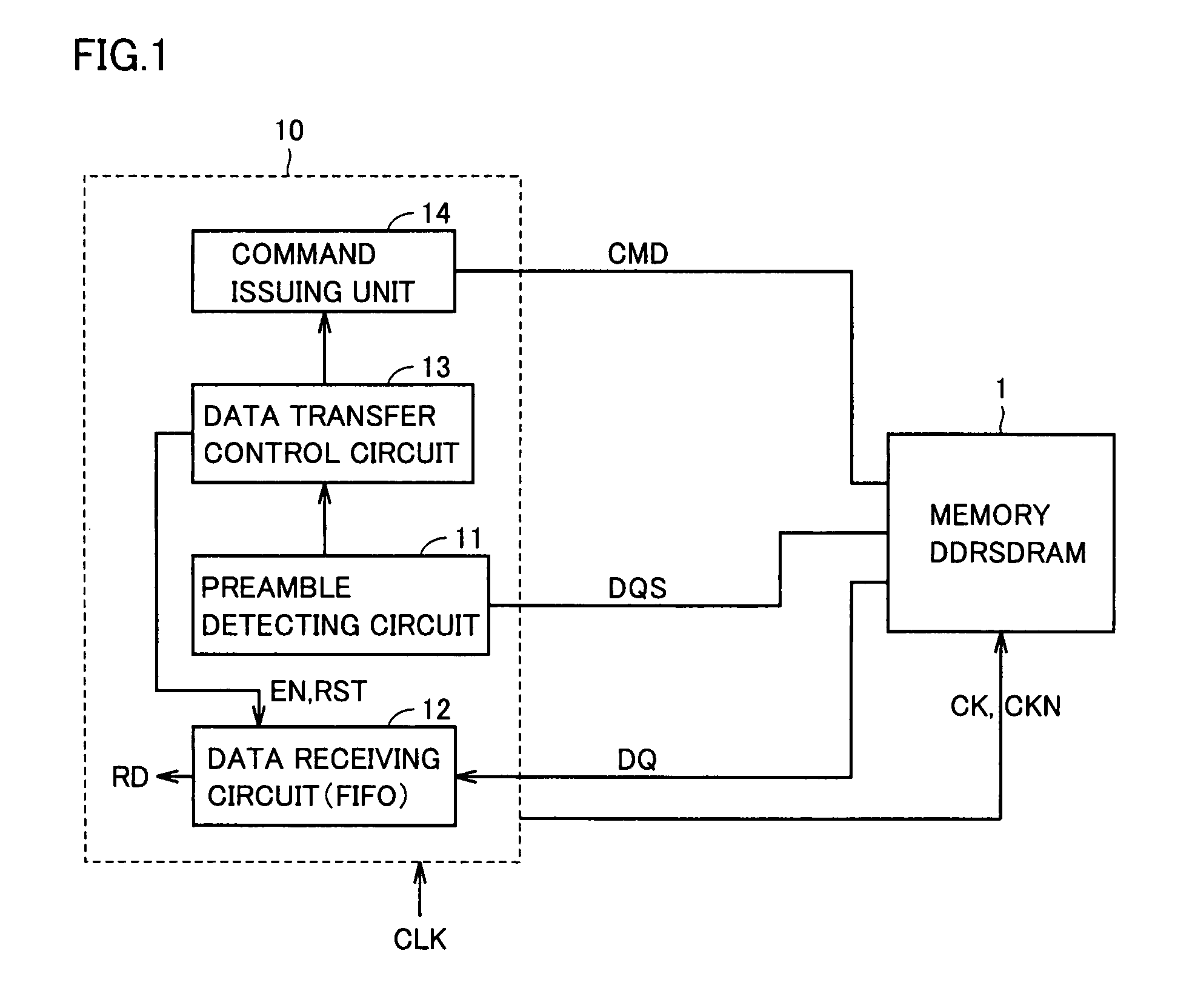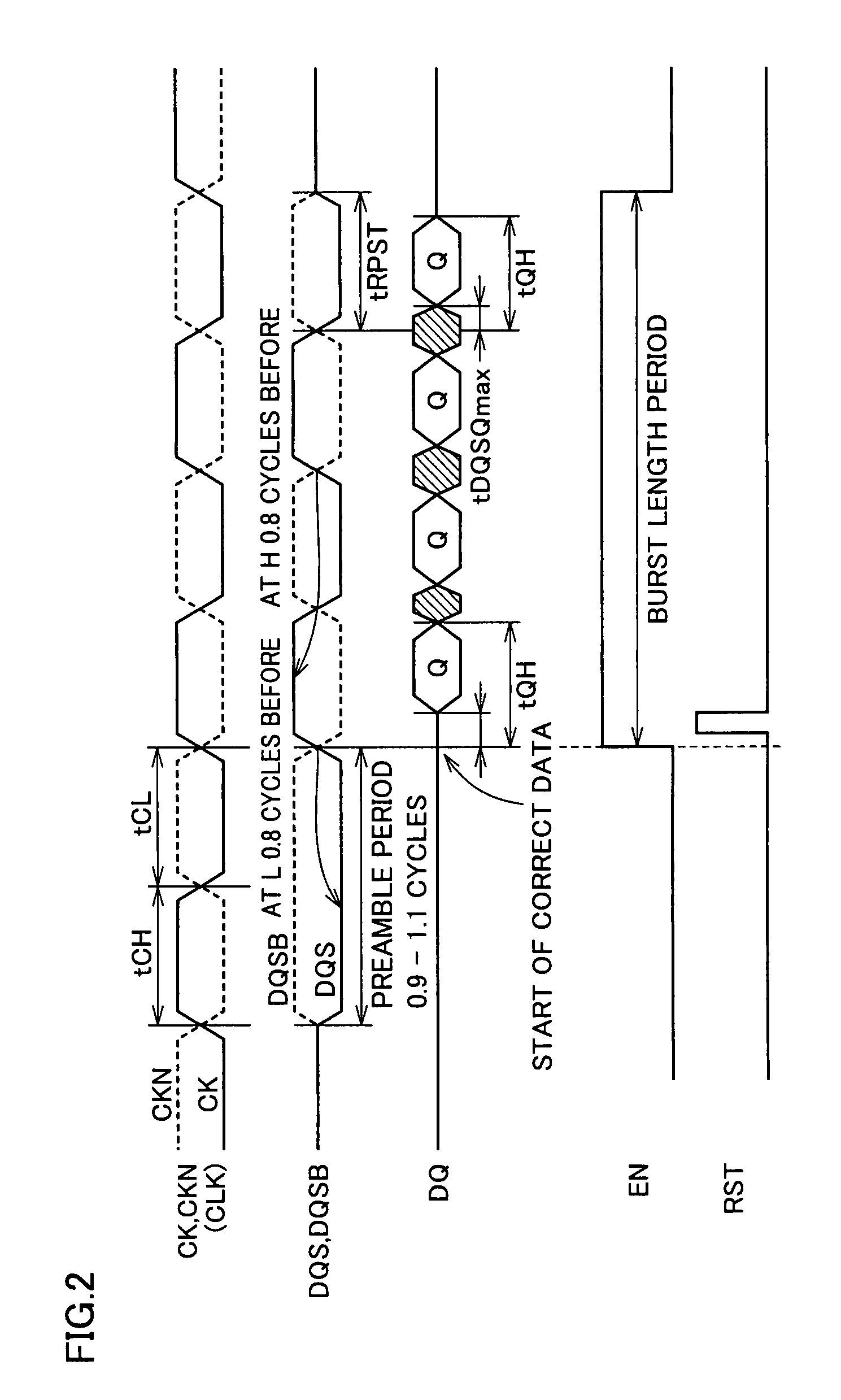Interface circuit
a technology of interface circuits and circuits, applied in the field of interface circuits, can solve problems such as data destruction, data cannot be accurately taken, data cannot be read-in correctly, etc., and achieve the effect of simple circuit configuration
- Summary
- Abstract
- Description
- Claims
- Application Information
AI Technical Summary
Benefits of technology
Problems solved by technology
Method used
Image
Examples
first embodiment
[0044]FIG. 1 shows an example of a construction of a processing system that has a controller with a memory interface circuit according to a first embodiment of the invention. The controller may be a memory controller or a processor. In the following description, the controller performs data transfer with an SDRAM, and is referred to as a “memory controller”.
[0045]In FIG. 1, the processing system includes a memory 1 and a memory controller 10 transferring data with memory 1. Memory controller 10 receives a clock signal CLK, and has an operation cycle defined according to clock signal CLK. Memory 1 is formed of, e.g., a DDR SDRAM, and transfers read data DQ to memory controller 10 together with a data strobe signal DQS in synchronization with clock signals CK and CKN when a command CMD issued from memory controller 10 instructs a read mode. Clock signals CK and CKN are complementary to each other, and are applied from memory controller 10.
[0046]Memory controller 10 includes a data rec...
second embodiment
[0075]FIG. 5 schematically shows an example of a configuration of data receiving circuit 12 according to a second embodiment of the invention. In the second embodiment shown in FIG. 5, an output signal of preamble detecting circuit 11 is used as write pointer reset signal WPRST. This preamble detecting circuit 11 has the same configuration as preamble detecting circuit 11 shown in FIG. 3, but uses detection signal DKT of detector 22 shown in FIG. 3 as write pointer reset signal WPRST instead of the reset signal applied from reset signal generating circuit 24 shown in FIG. 3. This write pointer reset signal WPRST resets a write pointer indicating a write address of the FIFO circuits included in data receiving circuit 12 to an initial value.
[0076]Data receiving circuit 12 includes delay circuits 30-33 as a transfer clock signal generating circuit. Delay circuit 30 delays data strobe signal DQS applied from the memory by ¼ phase (90 degrees). Delay circuit 31 further delays a ¼ phase d...
PUM
 Login to View More
Login to View More Abstract
Description
Claims
Application Information
 Login to View More
Login to View More - R&D
- Intellectual Property
- Life Sciences
- Materials
- Tech Scout
- Unparalleled Data Quality
- Higher Quality Content
- 60% Fewer Hallucinations
Browse by: Latest US Patents, China's latest patents, Technical Efficacy Thesaurus, Application Domain, Technology Topic, Popular Technical Reports.
© 2025 PatSnap. All rights reserved.Legal|Privacy policy|Modern Slavery Act Transparency Statement|Sitemap|About US| Contact US: help@patsnap.com



